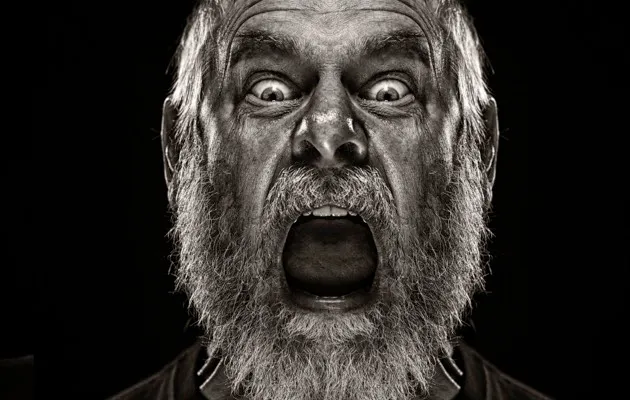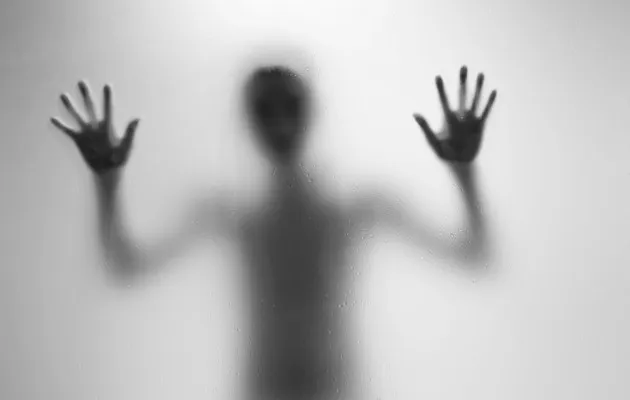In 1998 at a high school in Tennessee, a teacher complained of a pungent “gasoline-like” smell in her classroom. Soon after, she fell ill, reporting symptoms such as nausea, shortness of breath, dizziness and a headache. Almost immediately several students in her class started to experience similar symptoms and, before long, the rest of the school was stricken.
The building was evacuated as Fire fighters, ambulances and police arrived on the scene to tend to the sick. That evening the local emergency room admitted 80 students and 19 staff members; 38 were hospitalised overnight.
But what was the mysterious toxic gas that sparked the outbreak? Several extensive investigations by Government agencies found nothing. Blood tests showed no signs of any harmful compounds. Instead, according to Timothy Jones a local epidemiologist, the fear of being poisoned had spread, fuelling the symptoms experienced by everyone inside.
A report in the New England Journal of Medicine attributed the outbreak to a phenomenon known as ‘mass psychogenic illness’, which occurs when the fear of infection spreads just as virulently as the disease itself. The students and staff had decided that, based on the behaviour of those around them, there was a real threat they needed to be afraid of.
The ‘outbreak’ in Tennessee demonstrates that people can be scared – to the point of sickness – without there actually being any real threat present. However, it begs the obvious question, what makes us feel afraid?

What are you afraid of?
One person who could answer that question is Dr Emily Holmes, a clinical psychologist at Oxford University who uses a selection of film clips to scare people in the lab. Holmes’s research simulates the symptoms of Post Traumatic Stress Disorder (PTSD) by using moments from films scary enough to invoke flashbacks in the viewer later – a hallmark symptom of the disorder.
“There are a lot of individual differences in what scares people. We want our clips to be so fearful that they intrude into your consciousness when you don’t want them to. Often these are the clips where there’s a sudden realisation that someone’s going to be hurt or killed.
“This is basically in line with the definition of trauma in the DSM-IV [Diagnostic and Statistical Manual of psychiatric disorders].” According to the manual, trauma is ‘an event or events that involve actual or threatened death or serious injury, or a threat to the physical integrity of self or others’.
Using a film with these qualities ensured that the participants in her experiments would experience intrusive thoughts in the weeks following their viewing. “In typical experimental paradigms loud, surprising noises or electric shocks are used to get a physical fear reaction,” says Holmes. “But we’re trying to create a fear response that persists long after the viewing to simulate the effects of PTSD. The most effective clips were those that were very disturbing or showed some kind of terrible event that was impossible to stop.”
Dr Holmes isn’t alone in pursuing this line of research. At Wisconsin University, Professor Joanne Cantor has spent the last decade discovering how films can scare us long after we’ve left the cinema. In her research, Cantor says that three recurring themes pop up in the films that people said scared them the most: disturbing visual images, imminent threat and a lack of control.
In her experiments, Cantor asks participants to write down how they feel when they think about the scariest film they’ve ever seen. When she analysed these descriptions, she discovered they were qualitatively similar to excerpts of PTSD patients reliving traumatic events.
“Your memory of the film makes an association to that feeling when you first saw the film,” says Cantor. “It’s similar to when we have a traumatic experience in our real lives. People wrote extensively about how they felt when they first saw the film, and how just thinking about it makes them feel the same way again.”
In fact, Cantor’s participants were so affected by these films that many of them lost sleep and developed phobias long after the film. But why is it that we can’t tell the difference between a real threat and a fake one?
According to Cantor, it’s because the scariest films trigger a primitive part of the brain known as the amygdala. When we’re afraid, this area is shown to be highly active in fMRI scans. It sits in a ‘lower’ portion of the brain that would have developed early on in our evolutionary history to help us avoid becoming a snack for a sabre-toothed tiger, for example.
In scans, the amygdala’s activation coincides with the bodily response that we all associate with fear: increased heart-rate, blood pressure, sweating and alertness – otherwise known as the fight or flight response. When it perceives a threat, the amygdala triggers nervous responses and stimulates the production of hormones that affect the body. It’s also connected to the hippocampus, where we store our memories, so that it can remind us to be afraid when we encounter the same threat again.
So it’s this part of the brain that gets riled up when we perceive a threat. “The amygdala doesn’t control what we think, but rather our instinctive bodily reaction to an event,” says Cantor. “It evolved so that when we came across something threatening, regardless of whether it’s real or not, it reacts. Your memory in the hippocampus then makes an association to what you felt when you first encountered that event.”

Fear centre of the brain
Unfortunately the more highly evolved part of the brain, the forebrain, finds it difficult to override the reaction of the amygdala to tell us that there’s nothing to be afraid of. “It’s hard for our conscious mind to damp down our physiological reactions,” says Cantor. “For example, people who had an adverse reaction to Jaws not only find themselves scared of going into the ocean, but also find themselves afraid to go into lakes and pools, even though they know there’s no possibility of finding a shark in either. The same is true for depictions of the supernatural in films; we’re afraid of something with such power that it’s beyond our ability to control, and our conscious mind can’t reverse that.”
But how do filmmakers manage to get our amygdala’s so revved up? “Take Hitchcock for example, he injected threat into the most benign places, like a shower,” says Cantor. “He also knew that suspense, the promise of threat, would keep our flight or fight response going, drawing out that uncomfortable experience of being afraid.”
This time-shift plays out in the real world too. A study by Richard Bryant at the University of New South Wales in Australia, found that novice skydivers typically think the preparation for a jump seems much longer than it actually is. Their reaction to the imminent threat of falling from a plane makes them perceive time as passing more slowly. In the same way, the moments right before Psycho’s infamous shower scene can feel like they last a lifetime.
So it seems that directors and researchers alike exploit the primitive areas of our brains to scare us senseless. But it doesn’t end there; films can scare us simply by presenting us with things that we ought to be afraid of. Or, in evolutionary terms, what was most likely to kill us next.
Research carried out at Sussex University by Professor Andy Field has found that programmes like Doctor Who scare children by tapping into what they’re naturally afraid of at particular stages in their development.
“If you look at the way children develop, there are quite distinctive patterns of what they’re scared of at different ages,” says Field. “Babies tend to be scared of anything strange in their environment. As they get a bit older they tend to focus on animals or supernatural things, like ghosts and goblins, which makes sense in evolutionary terms. Then beyond eight they’re concerned about things like personal injury and getting hurt. Towards their teenage years it tends to be more social concerns.”
So it seems that lurking in the lesser-evolved parts of our brains, are natural fears that are actually quite healthy. Field adds that now that we’ve evolved to a point where we don’t need to be looking out for the next animal with sharp teeth, shows like Doctor Who could actually help us get past our fears. In his research, Field looked at whether The Water of Mars episode, which was broadcast in 2009, could have actually been of use to children if parents provided some context at the time. The episode saw Martian zombies trying to dine on the Doctor. “I wouldn’t push it too far,” says Field, “but facing up to scary things this way – at arm’s length – is quite important to develop emotional stability and ways to cope with challenging situations.”
Clearly fear has its uses. But why haven’t our fears caught up with the world around us? Computational neuroscientist Anders Sandberg, who works at the Future of Humanity Institute at Oxford University, spends his time dreaming up various ways in which the world could end. He says that the way we are biologically geared to perceive threats makes it very difficult to detect modern dangers. Speaking in 2010 about the fuel crisis he said “Our fear system evolved in a natural environment where the stuff you were supposed to be afraid of was very concrete. The problem is the fuel crisis is incredibly abstract.
“It’s not even clear to us that there’s any benefit to being scared of the crisis. You can’t do anything except feel bad about it. By comparison, being scared of a wolf, has a reward – surviving – which makes it worthwhile.”
But should we have evolved to be more afraid? “With my job, I could be very gloomy, but I try to be optimistic. In fact, dealing with it head-on makes me feel like I have some sort of control, which can help a lot. If you get to know what you’re afraid of, then you might, actually find out there’s nothing to be afraid of at all.”
